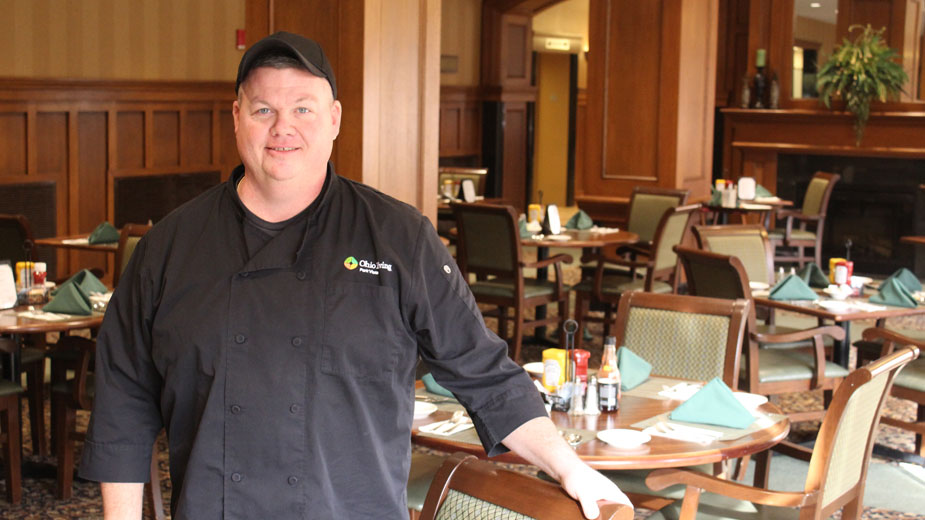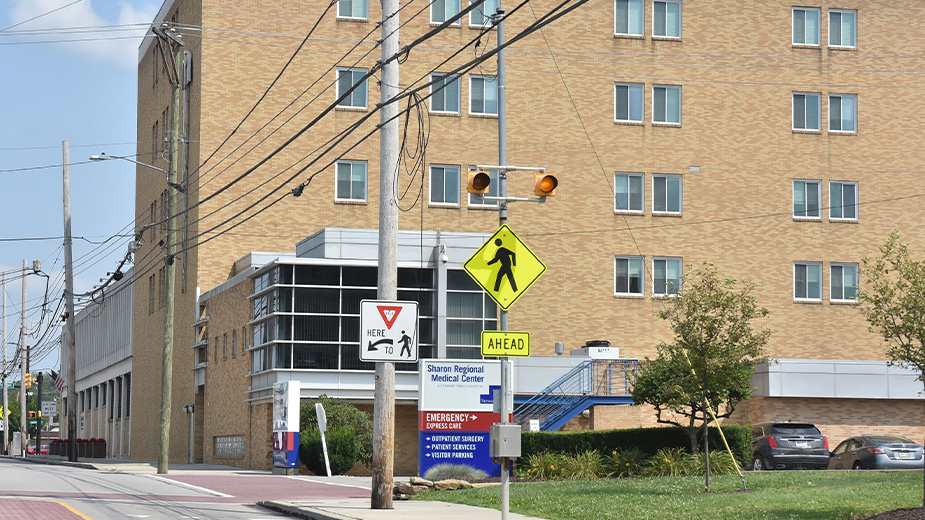In Assisted Living, Good Meals Nourish Happy Residents
YOUNGSTOWN, Ohio – In assisted living centers, the role of food is hard to overstate. Proper nutrition improves health. Enjoying a good meal with newly found friends can combat loneliness. Being able to choose what they eat helps residents regain a sense of independence.
“Food is really where it’s at. That’s what people look forward to,” says Kim Duncan, director of Windsor Estates Assisted Living Residence in New Middletown.“They get three meals a day and a snack at night. We have to make sure we’re offering them choices and covering everything. You might have somebody who wants chicken francaise and somebody else who wants a fried bologna sandwich.”
The assisted living center takes in suggestions from residents as to what the menu should feature, the same practice used at Ohio Living Park Vista and Briarfield Health Care Centers.
“I use all of their input to put it together. It’s specific to the people that live there,” says Jennifer Cox, corporate dietitian for Briarfield.
Briarfield operates eight centers throughout the area, each with a menu tailored to its residents.
At Park Vista, says director of culinary and nutritional services Brian Lippiatt, what residents want on the menu is gathered from resident councils and then adjusted to meet the needs of all 200-some residents, which may require some interpretation.
“A lot of times, we hear [requests for] healthier items. When I hear that, I realize that what’s healthy for you may not be healthy to me and vice versa,” he says. “I’ve taken it to be fewer fried foods, more baked items and vegetarian things.”
With baby boomers aging and beginning to enter assisted living en masse, those in charge of culinary services are seeing a change in requests. With more choices for food and culinary styles than ever before, boomers want to see the same types of meals available wherever they’re living.
“A lot of the population now is used to variety,” Briarfield’s Cox says, noting that she does still have to account for the older residents.
At Briarfield, residents can range in age from late 50s to late 90s. “It’s common for us, being out and about, to stop at a place like Silva’s [Lebanese] Deli and get hummus or something. If I were to put that on the menu, there’s a group that’d be inclined to eat it and some would just say, ‘What’s that?’ ” she says.
At all three organizations, menus rotate through a four-week cycle and change a few times a year. Lunches and dinners feature two entrees alongside an alternative menu, usually featuring seven or eight options.
To accommodate for health needs, assisted living centers stick to a “no added salt” policy, allowing residents to add salt as they wish. For those with diabetes or other medical conditions, staff will advise residents on what will be best, but ultimately leave the choice up to the them.
“A lot of times, they want what they want. But we have to watch some things,” Lippiatt says. “It’s the residents’ choice, but we can counsel them and give the information they need to know.”
Per the Ohio Food Code, centers are required to provide at least three “nourishing, palatable and appetizing meals daily,” each meeting residents’ nutritional needs as laid out by the Food and Nutrition Board and the National Academy of Science. Centers are also required to keep track of what residents are eating for up to three months.
“We have it broken into carbohydrates per day, fruits per day and proteins per day. So each meal is balanced to that,” says Tina Munholand, nutritional services manager for Windsor Estates.
Providing residents with three square meals a day, along with a state-mandated daily snack, can boost their health, both physically and mentally. Especially for those who lived alone before entering assisted living, complete meals are crucial to elder care.
“Eating a balanced meal and proper hydration, you see cognition improve,” Briarfield’s Cox observes. “Most of us, unless we’re very health-conscious about what we’re eating, just eat and go about our day. We don’t think about how it’s nourishing or about staying hydrated. For the elderly, sometimes the structure with meals prepared for them can lead to better daily health.”
Mealtime also serves as a social function. Caretakers see that residents can be withdrawn when they first arrive. Getting them acclimated to their new environment can bring them out of their shells. While all assisted living centers host daily activities, not everyone wants to be part of a big group, Lippiatt says, instead preferring to socialize with a smaller circle of friends over food.
“It’s one of the most important parts of their days. They’re here all day long 365 days a year, some with family who visit and some who don’t,” he says. “We have to do the best we can with the meals because that’s their social time and time to have a conversation over a meal.”
Beyond the kitchens and dining halls, the role of food in aging can be misunderstood. Eating less can cause worry, Cox says, though it’s frequently the result of a more sedentary lifestyle.
As such, portions in assisted living dining rooms are often smaller than what’s made at restaurants or even at home, Lippiatt adds.
“You or I might have two plates here when we’d have one when we go out,” he says. “A lot of them don’t want large portions.”
As we age, the sense of taste is among the first to diminish. Sometimes, the elderly may avoid foods they once loved, which can cause alarm among family, Cox says.
“It’s not uncommon for a family member to say, ‘Dad always loved bacon. Why won’t he eat it now?’ It’s because it doesn’t taste the same to him,” she explains. “The taste of sweetness is usually the last one to go, so as they get older, families may notice that mom is only eating her dessert.”
Pictured: Brian Lippiatt, director of culinary and nutritional services at Ohio Living Park Vista, gathers resident input when creating menus.
Copyright 2024 The Business Journal, Youngstown, Ohio.



